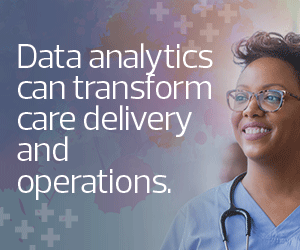Supporting Overburdened Clinicians Is a Priority
“There’s a ton of opportunity just on the workflow efficiency side to really help our clinicians,” Lahr said. Physicians and nurses are often spending too much time on administrative tasks, cutting short their focus on patients. Automated solutions can help return that precious time.
Lahr was previously the CIO and chief medical information officer of South Dakota-based Monument Health, which rolled out Artisight’s monitoring technology in 2021 to streamline hospital workflows. That involved putting cameras in visible spaces so nurses could have a “digital window” to help prioritize tasks. In the next five or so years, Lahr said she expects more cameras to fill more hospital rooms across the country.
“There’s just no way to be able to continue to provide the volume and level of care that we need to do without having some forms of automation,” she said. “Because of the complexity, I think it’s going to require computer vision and natural language processing at the basis of that to really get us the gains that we need.”
For example, clinicians need to track the moment a patient enters an operating room, but having employees manually input that data is a high burden. Instead, a computer vision solution should be able to track that movement, Lahr said.
“If we could just automate some of those very simple tasks, we could reduce the friction for our clinicians and allow them to actually get back to the bedside care that we want them to do,” she added.
DISCOVER: How healthcare organizations can take their data analytics program to the next level.
What Providers Are Relying on Now, with an Eye to the Future
Tampa General Hospital continues to improve its data approach, especially after setting up a command center that uses real-time situational data, Arnold said.
Now, the organization is moving beyond throughput to predict patient outcomes. Arnold said the hospital has found cost savings and that the average length of stay has dropped.
“What can we do with the data that we’re sitting on to either improve care or lower the cost of healthcare?” he asked. Tampa General recently announced a data partnership to accelerate its program.
D’Addio, with Moffitt Cancer Center, said that developing voice technologies to support a clinician experience without a keyboard or mouse is a major goal, with security top of mind.
From a networking perspective, how can providers let data flow to the places where AI tools can do the best work? The current network bandwidth might not be enough.
“We’re looking at how to put all those things together: how to build a better network, how to build better data flows,” he said. “How can I provide a technological framework that makes their jobs more efficient?”
READ MORE: Learn how to avoid four common AI mistakes.
BayCare Health System is using Amazon Alexa in hospital rooms to support clinicians at the bedside. Weiss said patients using Alexa can have their needs directed to the correct department rather than using up a nurse’s time troubleshooting.
He also credited the use of robots to deliver supplies to rooms as a major advantage amid staffing shortages.
AI is becoming more embedded into healthcare, Weiss added, noting that applications that previously did not have an AI component have evolved. With so much data in a patient’s record, it’s difficult for clinicians to look through it all to deliver the most personalized care.
Weiss said he looks forward to better automated clinical documentation. Solutions such as Nuance’s Dragon Ambient eXperience have been critical in supporting nursing documentation at the bedside.
This article is part of HealthTech’s MonITor blog series.












